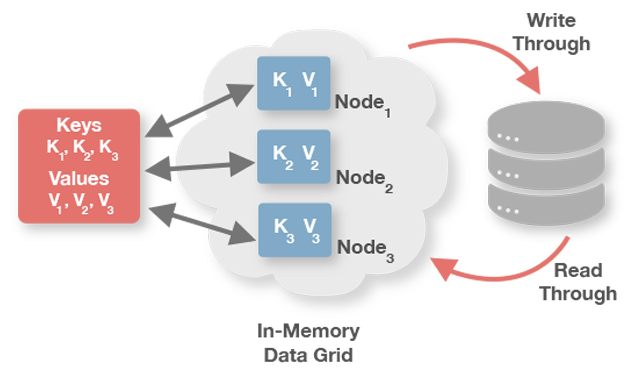Custom Key Generator Spring Cache
In the last example we saw how to use a custom KeyGenerator by using CacheConfig#keyGenerator. In this example, we will see how to register our custom KeyGenerator globally by implementing CachingConfigurer interface or by extending its adapter class CachingConfigurerSupport.
To learn more see a.Mirrakey is an ActiveX DLL and supports any development environment that is COM(Component Object Model) compliant. License key for 2d text generator misterhorse.
- Custom Key Generator Spring Cache Download
- Custom Key Generator Spring Cache Free
- Customkey Generator
- Spring Cache Key
- Spring Boot Cache Key
- Spring Cache Custom Key Generator Example
Example
Java Config
CachingConfigurer interface is to be implemented by @Configuration classes annotated with @EnableCaching. It provides various methods to configure or customize caching abstraction.
By default a cache key is generated by a key generator that uses Arrays.deepHashCode(Object) and Arrays.deepEquals(Object, Object) on the method parameters. The cache lookup based on this key is similar to a HashMap lookup. Jun 29, 2017 Spring Boot cache with. Spring.cache.type=redis spring.redis.host=192. @CacheConfig — Class level annotation allows to specify global values for annotations like cache name or key generator.
We are also overriding cacheManager() method to register our cache provider.
The Custom KeyGenerator
A service bean
As compare to the last example, we don't need to use @CacheConfig#keyGenerator or @Cacheable#keyGenerator anymore.
The main class
Example Project
Dependencies and Technologies Used:
- spring-context 5.0.4.RELEASE: Spring Context.
- JDK 1.8
- Maven 3.3.9
Spring 3.1 M1 is out with some very useful features. One of the coolest feature in the latest release is comprehensive Caching support! Spring Framework provides support for transparently adding caching into an existing Spring application. Similar to the transaction support, the caching abstraction allows consistent use of various caching solutions with minimal impact on the code. The cache is applied to Java methods, reducing the number of executions based on the information available. Spring checks if the given method is already executed for given set of parameters. If the method is already executed, Spring uses the cache value and returns it to caller instead of calling the method again. This is a write through cache. This way, expensive methods (whether CPU or IO bound) can be executed only once for a given set of parameters and the result reused without having to actually execute the method again. The caching logic is applied transparently without any interference to the invoker.
Adding Cache support to Spring project
In order to add Cache support to any Spring based project, one needs to declare the configuration using new Spring tag in the schema declaration. Note thecache:annotation-driven tag in above declaration enables the caching in given Spring project. 
Using @Cacheable and @CacheEvict annotations
Spring 3.1 M1 provides two very useful Java annotations:@Cacheable and @CacheEvict which allow methods to trigger cache population or cache eviction. Let us take a closer look at each annotation: @Cacheable annotation
This annotation mark a method cacheable. Thus the result from this method call will be stored into the cache on subsequent invocations with same arguments. In the above code snippet, methodprofileCustom Key Generator Spring Cache Download
is marked cacheable using@Cacheable annotation. Also the method is associated with a cache named “persons“. Whenever method profile is called, the Spring framework will check if cached entry is available in persons cache and returns the same without calling profile method. It is also possible to provide multiple cache names if you have multiple caches declared in your application. For example: In above code snippet, we provide two cache names persons and profiles. Spring framework will check in all the caches if entry is available for given method call with argument personId, if at least one cache is hit, then the associated value will be returned. @CacheEvict annotation
Cache eviction is removing of any unused or stale data from the cache. Opposed to @Cacheable, annotation @CacheEvict demarcates methods that perform cache eviction, that is methods that act as triggers for removing data from the cache. Just like its sibling, @CacheEvict requires one to specify one (or multiple) caches that are affected by the action, allows a key or a condition to be specified but in addition, features an extra parameterallEntries which indicates whether a cache-wide eviction needs to be performed rather then just an entry one (based on the key): This annotation is very useful when an entire cache region needs to be cleared out. The Spring framework will ignore any key specified in this scenario as it does not apply. Using Default key
The cache is nothing but a key-value store which stores the data based on certain key. In Spring framework based caching, the method arguments of cached method acts as the source of Key generation. Every key is essentially the Hash-code of these arguments. This approach works well for objects with natural keys as long as thehashCode() reflects that. If that is not the case then for distributed or persistent environments, the strategy needs to be changed as the objects hashCode is not preserved. In fact, depending on the JVM implementation or running conditions, the same hashCode can be reused for different objects, in the same VM instance. To provide a different default key generator, one needs to implement the org.springframework.cache.KeyGenerator interface. Once configured, the generator will be used for each declaration that does not specify its own key generation strategy. By default, all the method arguments are used in Key generation logic. In practice not all methods have only one argument or, worse yet, the parameters are not suitable as cache keys – take for example a variation of the method above: Here we are using just personId in key generation ignoring groupId altogether. Understand Conditional caching
Spring framework also supports conditional caching letting user to cache certain methods based on some conditions. For example, in following code snippet we cache profiles only for those users who have profileId greater than 50:Currently supported libraries
There are probably hundreds of cache libraries available which can be used in your JEE project. For now the Spring framework supports following implementations:- JDK ConcurrentMap based Cache
- Ehcache based Cache
JDK ConcurrentMap based Cache
The JDK-based Cache implementation resides underorg.springframework.cache.concurrentCustom Key Generator Spring Cache Free
package. It allows one to useConcurrentHashMap as a backing Cache store. In above code snippet, we use SimpleCacheManager class to create a CacheManagerCustomkey Generator
 . Note that we have created two caches in our application, one is
. Note that we have created two caches in our application, one is default and second is persons. Ehcache based Cache
The Ehcache implementation is located underorg.springframework.cache.ehcacheSpring Cache Key
package. Again, to use it, one simply needs to declare the appropriateCacheManager